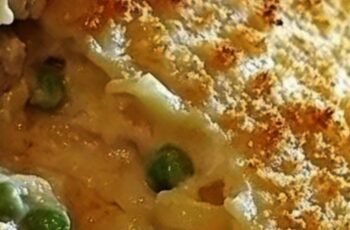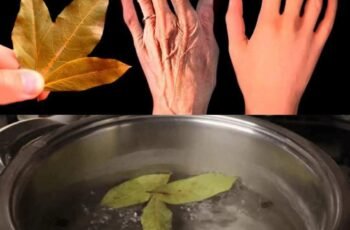
When Leg Pain Takes Over: Understanding Rheumatism, Varicose Veins, and Arthritis
“My mother could not walk because of the pain.”
This is not just a statement. It is a cry for help, a reflection of the invisible battle that millions of people — especially the elderly — face daily. Leg pain, caused by a combination of rheumatism, varicose veins, and arthritis, can be crippling. But to understand how to help, we need to look deeper into what’s happening inside the body.
The Complexity of Leg Pain
Leg pain is often dismissed as “just aging.” But the truth is more complex. It may be the result of inflammation, poor blood circulation, joint degeneration, or nerve damage. When pain becomes so severe that someone can’t walk, it’s not just a symptom — it’s a serious medical issue that requires immediate attention.
Let’s break down the most common causes affecting people like your mother.
1. Rheumatism: The Hidden Inflammation
“Rheumatism” is a general term used to describe inflammatory conditions that affect the joints and connective tissues. One of the most common types is rheumatoid arthritis, an autoimmune condition where the immune system mistakenly attacks healthy joint tissue.
Symptoms:
- Joint stiffness (especially in the morning)
- Swelling in knees, ankles, and toes
- Persistent fatigue
- Pain that comes and goes, then stays
Over time, untreated rheumatism can damage joints permanently and lead to deformity and immobility.
What Helps:
- Anti-inflammatory medications (NSAIDs)
- Omega-3 supplements
- Gentle exercise like water aerobics
- Physical therapy
2. Varicose Veins: More Than Cosmetic
Varicose veins are enlarged, twisted veins usually found in the legs. They occur when vein valves weaken, causing blood to pool instead of flow back to the heart.
Symptoms:
- Bulging veins on the legs
- Heaviness or aching after standing
- Swelling around the ankles
- Skin discoloration
If left untreated, they can lead to chronic pain, skin ulcers, or even deep vein thrombosis (a serious condition where blood clots form in the deep veins).
What Helps:
- Compression stockings
- Elevating the legs several times a day
- Avoiding long periods of standing or sitting
- Medical treatments like sclerotherapy or laser vein closure
3. Arthritis: Degeneration of Joints
Arthritis is another major cause of leg pain and stiffness, particularly in the hips, knees, and ankles. The most common type is osteoarthritis, which is caused by wear and tear on the joints over time.
Symptoms:
- Pain during or after movement
- Decreased flexibility
- Grinding sensation in joints
- Bone spurs (visible or felt as hard lumps)
In advanced stages, arthritis can make walking nearly impossible without pain or assistance.
What Helps:
- Weight management (excess weight worsens joint pressure)
- Use of walking aids like canes or walkers
- Joint injections (such as corticosteroids or hyaluronic acid)
- In severe cases, joint replacement surgery
The Emotional Toll of Chronic Leg Pain
Beyond the physical effects, chronic pain causes emotional suffering. It’s heartbreaking to watch a loved one lose their independence. Many people with chronic leg pain also suffer from:
- Depression
- Anxiety
- Social isolation
- Loss of self-worth
That’s why it’s important to not just treat the condition, but also provide emotional and psychological support.
Holistic and Natural Approaches
While conventional medicine plays a major role, many people find additional relief from natural remedies, including:
- Turmeric: Natural anti-inflammatory that may reduce joint swelling
- Ginger tea: Can ease muscle and joint pain
- Massage with essential oils: Peppermint or lavender oil may ease muscle tension
- Hot and cold therapy: Warm baths, cold packs, or heating pads help reduce stiffness and inflammation
Always consult a doctor before starting any herbal or alternative treatment.
Prevention and Daily Management
Helping your mother — or anyone facing leg pain — involves daily support and smart lifestyle changes:
✅ Stay active (safely): Even short, gentle walks can keep joints mobile
✅ Balanced diet: Rich in calcium, vitamin D, omega-3s
✅ Supportive footwear: Cushioned, orthopedic shoes reduce joint stress
✅ Regular checkups: Early diagnosis of worsening conditions can prevent severe complications
A Message of Hope
It’s heartbreaking to see someone you love in pain. But the situation is not hopeless. With proper diagnosis, treatment, and care, many people regain mobility, independence, and a better quality of life.
If your mother is suffering to the point of immobility, it’s vital to:
- Get a full medical evaluation
- Understand the root causes (X-rays, blood tests, etc.)
- Begin a personalized treatment plan
No one should have to suffer in silence. With awareness, compassion, and the right medical support, healing is possible.
Conclusion:
Leg pain from conditions like rheumatism, varicose veins, and arthritis is not just a symptom — it’s a life-altering struggle. But with the right care, the right choices, and support from family and professionals, even someone who couldn’t walk yesterday may find themselves standing strong again tomorrow.
If you’d like, I can also turn this article into a printable PDF, brochure, or visual post to help others. Would that be useful?

